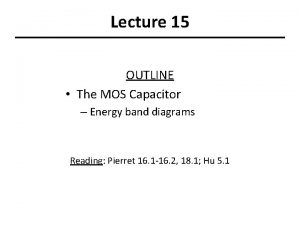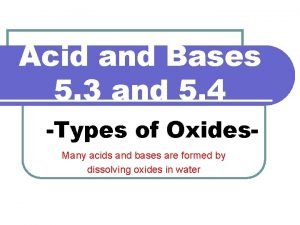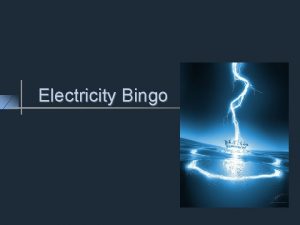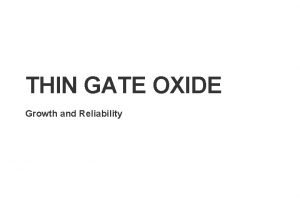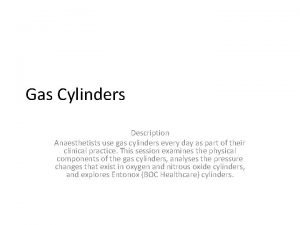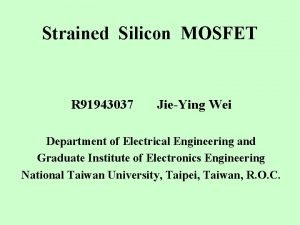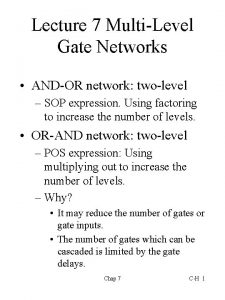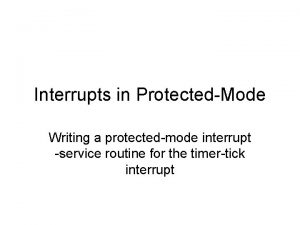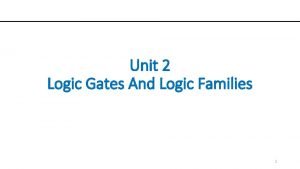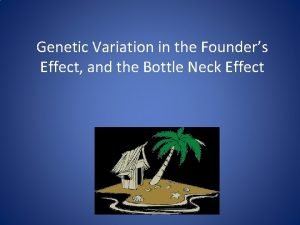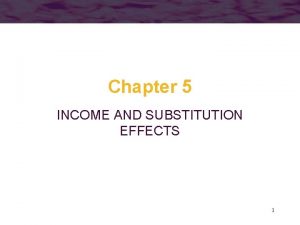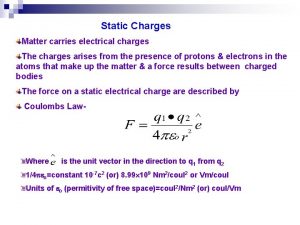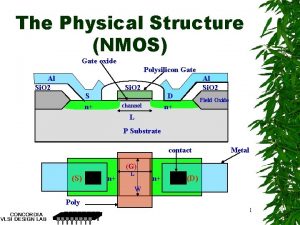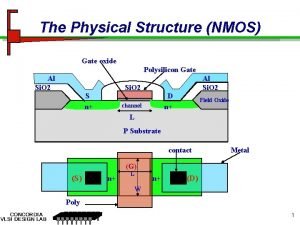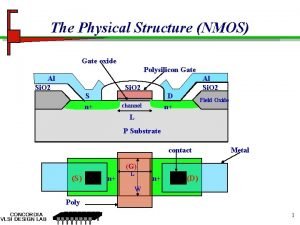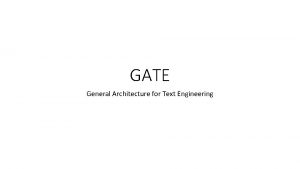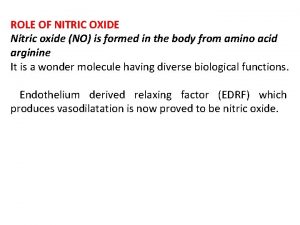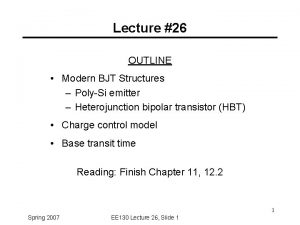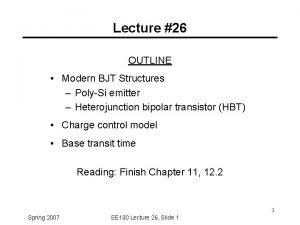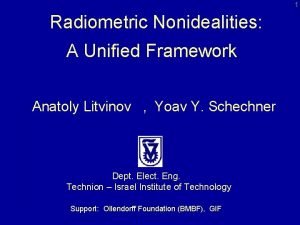MOSCAP Nonidealities Effect of oxide charges PolySi gate















- Slides: 15

MOSCAP Non-idealities – Effect of oxide charges – Poly-Si gate depletion effect – VT adjustment – HW 9

Oxide Charges • Within the oxide: – Trapped charge Qot • High-energy electrons and/or holes injected into oxide – Mobile charge QM • Alkali-metal ions, which have sufficient mobility to drift in oxide under an applied electric field • At the interface: – Fixed charge QF • Excess Si (? ) – Trapped charge QIT • Dangling bonds

Threshold Voltage Shift (x is defined to be 0 at metal-oxide interface) Fixed charge: Mobile charge: Trapped charge:

Oxide Charge Effect on CV Mobile ion: Trapped charge:

Gate Depletion and Inversion Gauss’s Law dictates that Wpoly = eox. Eox / q. Npoly n+ poly-Si Cpoly + + + + Cox N+ - - - - - p-type Si Inversion layer thickness:

Effective Oxide Capacitance, Coxe

VT Adjustment – A relatively small dose NI (units: ions/cm 2) of dopant atoms is implanted into the near-surface region of the semiconductor that shifts the threshold voltage in the desired direction.

The MOSFET Non-idealities • Velocity saturation • Short channel effect • HW 11

Velocity Saturation Velocity saturation limits IDsat in sub-micron MOSFETS Simple model: for e < e sat for e esat Esat is the electric field at velocity saturation:

MOSFET I-V with Velocity Saturation In the linear region: EE 130/230 M Spring 2013 Lecture 22, Slide 10

Short- vs. Long-Channel NMOSFET For very short L:

The Short Channel Effect (SCE) i) VT roll-off ii) DIBL ii) Degraded SS

The Short Channel Effect (SCE) iv) Punch-through

Hot carriers and SD structure • The lateral electric field peaks at the drain end of the channel. • High E-field causes: –Damage to oxide interface & bulk (trapped oxide charge VT shift) –substrate current due to impact ionization: LDD structure:

Current and voltage with Parasitic SD Resistance G RS S RD D • For short-channel MOSFET, IDsat 0 VGS – VT , so that IDsat is reduced by ~15% in a 0. 1 mm MOSFET. • VDsat is increased to VDsat 0 + IDsat (RS + RD)
 Moscap cv
Moscap cv Mos capacitor energy band diagram
Mos capacitor energy band diagram Acidic oxide
Acidic oxide Like charges blank and opposite charges blank
Like charges blank and opposite charges blank Thin gate oxide
Thin gate oxide Poynting effect nitrous oxide
Poynting effect nitrous oxide Specilis
Specilis Mobility ratio
Mobility ratio Nand gate to and gate
Nand gate to and gate Trap gate vs interrupt gate
Trap gate vs interrupt gate Not gate boolean expression
Not gate boolean expression Bohr effect and haldane effect
Bohr effect and haldane effect Founder effect vs bottleneck effect
Founder effect vs bottleneck effect Roy's identity
Roy's identity Word equation examples
Word equation examples Word equation of magnesium oxide
Word equation of magnesium oxide

